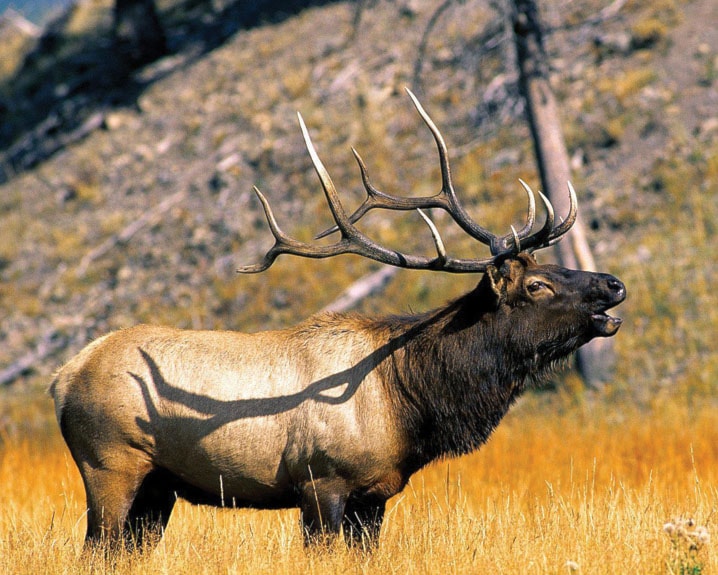How many times have I thought that the federal government seems determined to return the “territories” back to a past where we had to kill constantly to wrest a living from a hard and hostile land and make it fit for human habitation?
Latest occasion was the recent story in The Brooks Bulletin headlined War on elk just starting, say officials, producers.
Actually, the wapiti war should have started back in 1997-98 when the federal military at Canadian Forces Base Suffield in southeastern Alberta introduced, or ”re-introduced” as some like to claim, 220 surplus elk from Elk Island National Park onto the base to replace the feral horses they felt were too harmful to the ecosystem.
That dumb decision ranks up there with world-class wildlife mismanagement mistakes such as rabbits to Australia and red deer to New Zealand. In little more than 15 years, on prime prairie grassland, with virtually no predators, those 220 elk have become more than 5,000 head that are increasing by 20 per cent annually, and are now escaping to the surrounding country and causing major damage to the sanity, the fences, grass, crops and bale yards of area ranchers.
Fences mean no more to elk than they do to bison or moose, and when elk get into a fenced bale yard and up on the bales, their urine and feces ruin all the hay they don’t eat, making it totally unpalatable for cattle. Area ranchers despair at the mere thought of a drought year and the desert that would be created by a plague of elk on their grass and in their irrigated crops.
Recent limited hunting seasons, mainly for cow elk, have not alleviated the problem and now there is considerable federal-provincial dithering over what to do about a totally out of control herd of more than 5,000 elk on the world’s largest military base, parts of which also comprise a National Wildlife Area along the South Saskatchewan River.
It is clear that there is a complete failure here by the military to control what they have created, or to understand at the outset how herds of introduced animals can grow in a predator-free environment. Future court actions could remind the feds that when you bring a nuisance onto your land, you have a legal duty to confine it to your land.
They can’t say they weren’t warned. Dale Elsinger, a retired senior Alberta wildlife biologist, said early on that the herd would get out of control quickly unless the military had a management in place at the outset.
Delve though I did, I could find no credible historic evidence that, other than occasional sightings, elk were ever native to Alberta’s prairies. My delvings did yield this good 1958 sense from provincial wildlife biologist Robert Webb, quoted by Dr. J. Dewey Soper in his authoritative The Mammals of Alberta: “One of (the elk’s) shortcomings as a game animal is that it is largely a grass feeder and thus, under conditions of high density, can compete with domestic stock for food. As well, its predilection for stacked hay makes it incompatible with intensive cultivation.”
From a personal standpoint, another shortcoming is that mule deer do not like or do well when and where elk are common; CFB Suffield is probably no longer the prime Alberta mule deer area it was before the elk invasion.
By doing some delving themselves, maybe even heeding some good advice, the feds might have avoided unleashing this disaster, this wapiti tsunami on the ecosystem of their own base and onto the private and leased land of their farming and ranching neighbours.
As I write, the helicopters and other aircraft are aloft counting elk, and military and Alberta Environment-Sustainable Resource people are belatedly plotting a plan.
To some elk-beset ranchers in the area, the solution is obvious: they speak nostalgically of the helicopter-gun ships in the area a few years ago killing hundreds of deer to save them from death by chronic wasting disease. But then everyone ruefully realizes the public did not like that.
CWD is another disaster foisted on us by the federal and provincial governments legalizing game ranching despite unanimous warnings from respected scientists that to do so would result in horrific disease problems to our wild deer, moose, and elk. Letting CWD run amok until it gets to and wipes out the CFB Suffield elk is both ironic and unthinkable; besides, while CWD always kills, it takes too long a time doing it to solve the immediate problem.
A quicker solution? Certainly the base has the soldiers and weapons of mass destruction to declare war on wapiti and blow away the enemy it created.
Perhaps we could trap the elk and transport them to more suitable habitats to feed too many wolves and cougars, the result of provincial mismanagement.
Transport how? By helicopters, of course.
There is another dippy fed plan afoot for “ecological restoration” of bison to a remote area of Banff National Park. The humongous beasts would be flown in by helicopter.
But that is another irony, and another column.
Bob Scammell is an award-winning columnist who lives in Red Deer. He can be reached at bscam@telusplanet.net.
